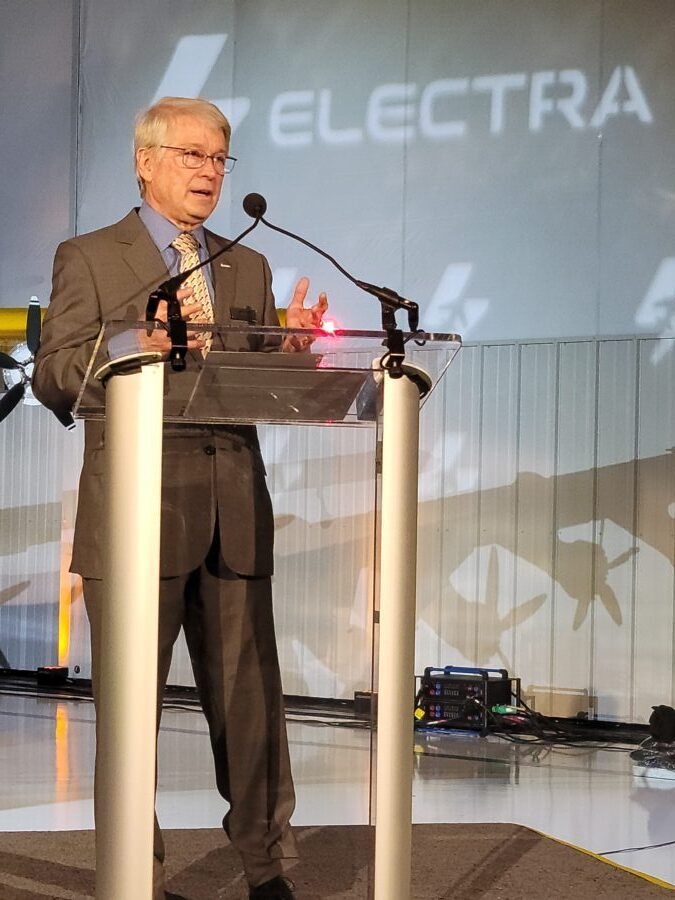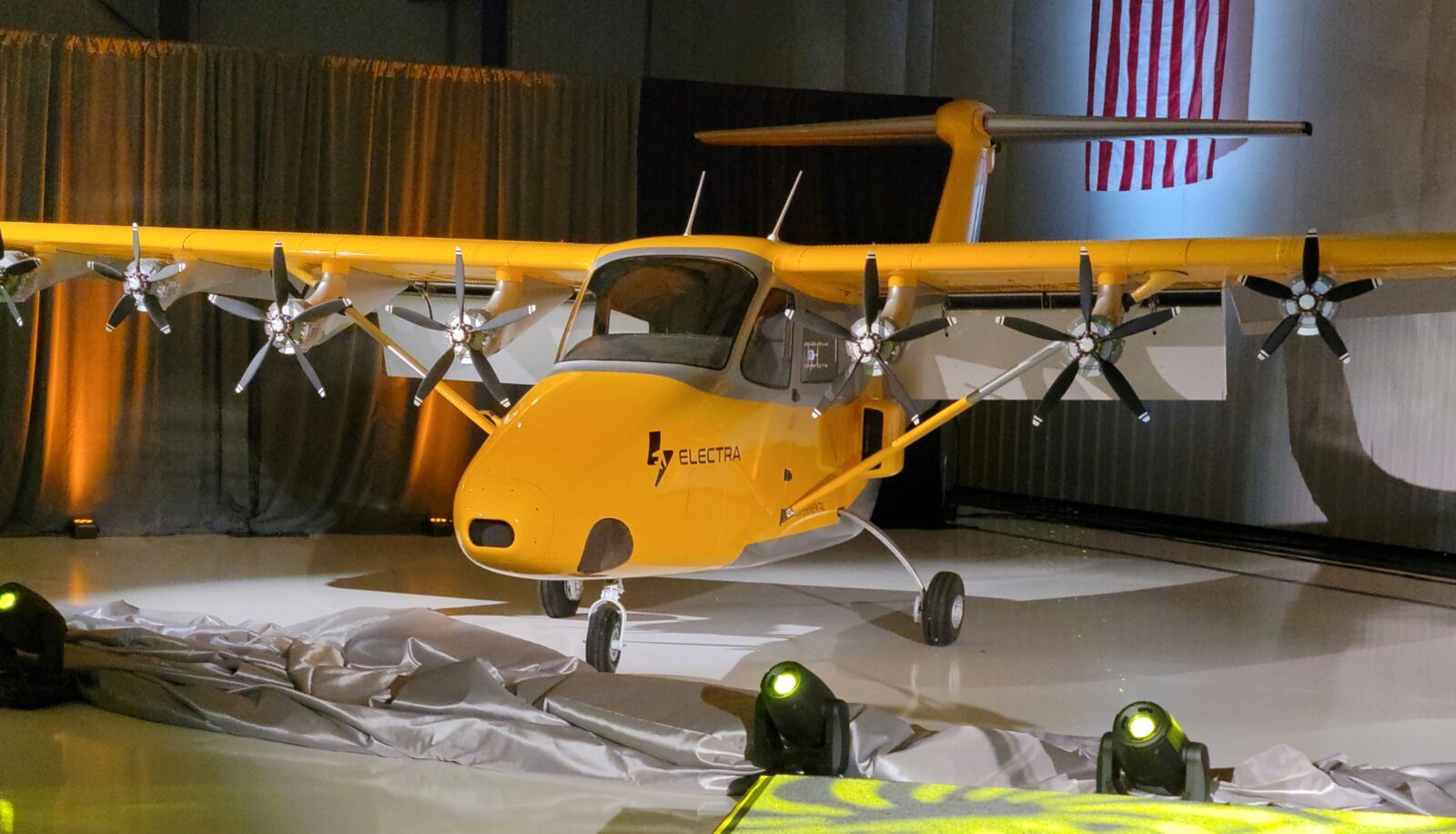Stay Up to Date
Submit your email address to receive the latest industry and Aerospace America news.
Coming test flights will be a step toward passenger version
MANASSAS, Virginia — Electra.aero believes the two-seat hybrid-electric demonstrator it unveiled here last night puts it on the path toward completing a nine-passenger commercial version in time to enter service in 2028.
This commercial version of the short takeoff and landing aircraft will be able to “get in and out of the Wall Street heliport and have a range of 500 miles with its full payload,” Electra founder and CEO John Langford said in an interview ahead of the rollout of the technology demonstrator, dubbed the EL-2 Goldfinch. “Over time, we envision a lot of different variants.”
Electra said the technology demonstrator and the nine-seater aircraft in most circumstances will need only 150 feet (45 meters) to take off or land — and definitely no more than 300 feet (90 meters). This will enable the fixed-wing aircraft to have “the operating flexibility of a helicopter,” Langford said.
Plans call for the Goldfinch to fly for the first time in a few weeks from Manassas Regional Airport, the Virginia general aviation airport where Electra is based. Electra has planned hundreds of test flights from Manassas and other locations. On the first flight, Electra won’t worry about the “ultra-short” goal, said John Hansman, the MIT aeronautics professor who will pilot the Goldfinch and is serving as a technical adviser to Electra, in a brief interview following the unveiling.
“We’ll fly conventional takeoff and landing and get the basic handling qualities validated and make sure that there are no problems,” he said about plans for the first flight. Hansman will be the only person onboard the aircraft because Electra’s experimental airworthiness certificate from FAA initially will only allow for one person.
While Hansman could take the Goldfinch as high as 10,000 feet during the first flight, the aircraft’s operating parameters will be determined by FAA, which must factor in Manassas Regional Airport’s proximity to Washington Dulles International Airport.
“We’re fairly restricted at the beginning,” Hansman said, noting that flight testing will eventually take place at locations beyond Manassas with more operating flexibility. He’ll take the Goldfinch up and toward a targeted air speed of 60 knots (111 kph).
To achieve the ultra-short takeoffs and landings, air will be blown and accelerated over the modified Cessna 172 wing to create an aerodynamic effect that will make the wing seem “larger than it physically is,” Langford said.
“What happens is the blowing is deflected by the flaps,” Hansman added, referring to the gray structures under the aircraft wings. “You get some lift from the deflection. In addition, the blowing goes over the top of the wing, so it delays stall. You can fly higher angles of attack than you could if you didn’t have that. Those two things together allow you to get a very high lift.”
Electra envisions that with this blown-lift technique, the passenger version could take off and land from a hospital parking lot.
While electric propulsion is critical for takeoff and landing, traditional fuel will power the aircraft in cruise, Langford said.
“Our normal mode of operation at takeoff is for the batteries and the turbo generator to work together, and then they work together again at landing,” Langford explained. “But during the cruise phase, it is operating entirely on the turbo generator, and, in fact, the turbo generator is recharging the batteries that were used for takeoff.”
Electra’s technology development is being funded in part by NASA and the U.S. Air Force Agility Prime program. Electra says it has 1,200 preorders for the nine-seater. A prototype of the nine-seat production aircraft is slated to be built by 2025.
Get the latest news about advanced air mobility delivered to your inbox every two weeks.
About Aaron Karp
Aaron is a contributing editor to the Aviation Week Network and has covered the aviation business for 20 years. He was previously managing editor of Air Cargo World and editor-in-chief of Aviation Daily.
Related Posts
Stay Up to Date
Submit your email address to receive the latest industry and Aerospace America news.





